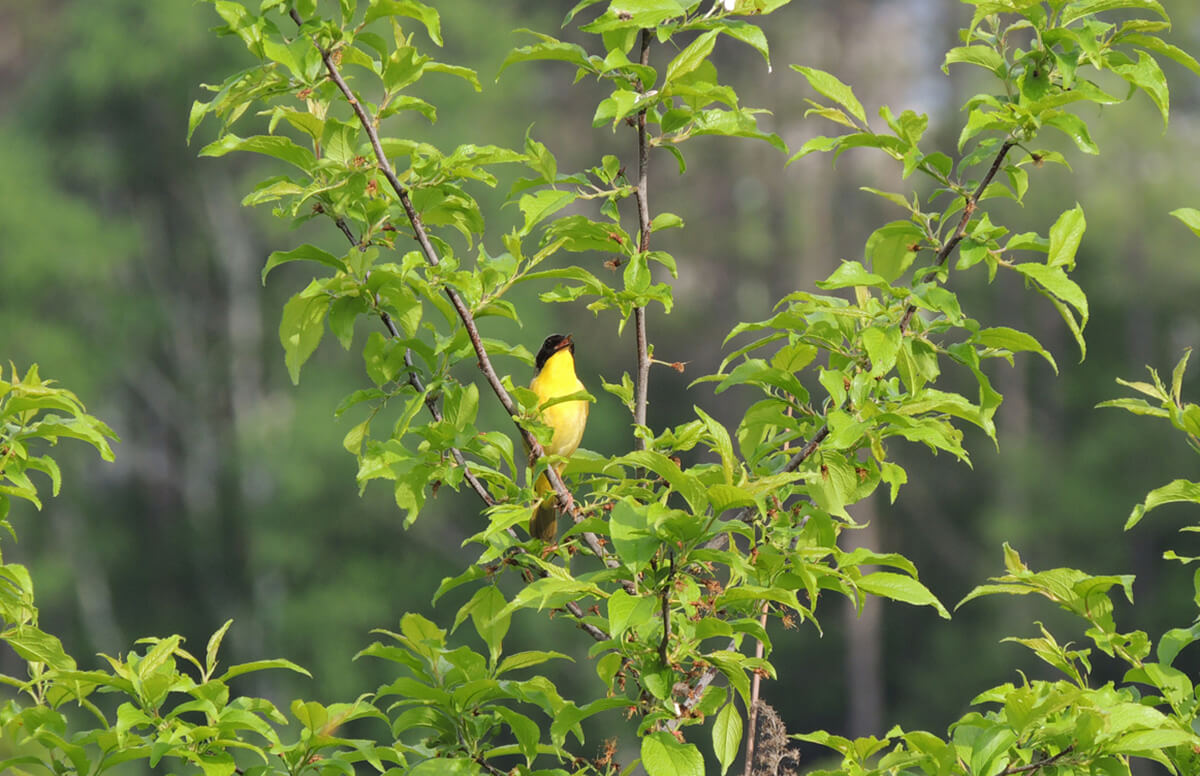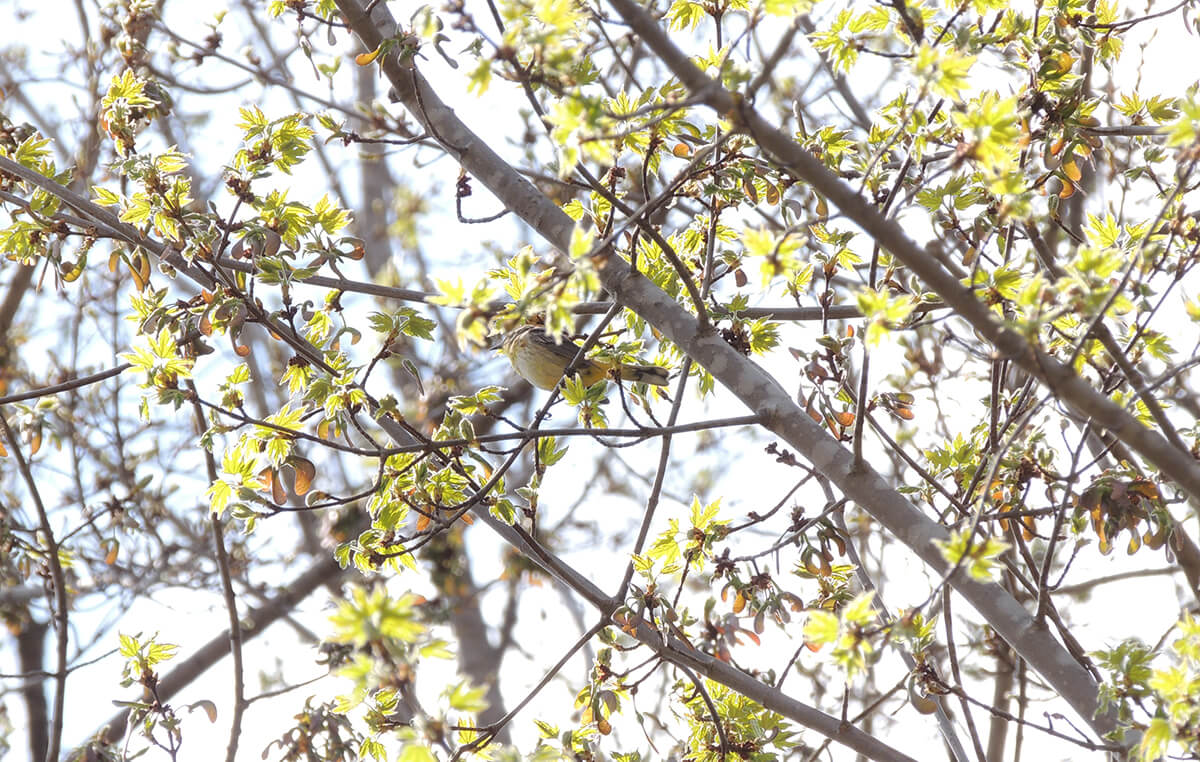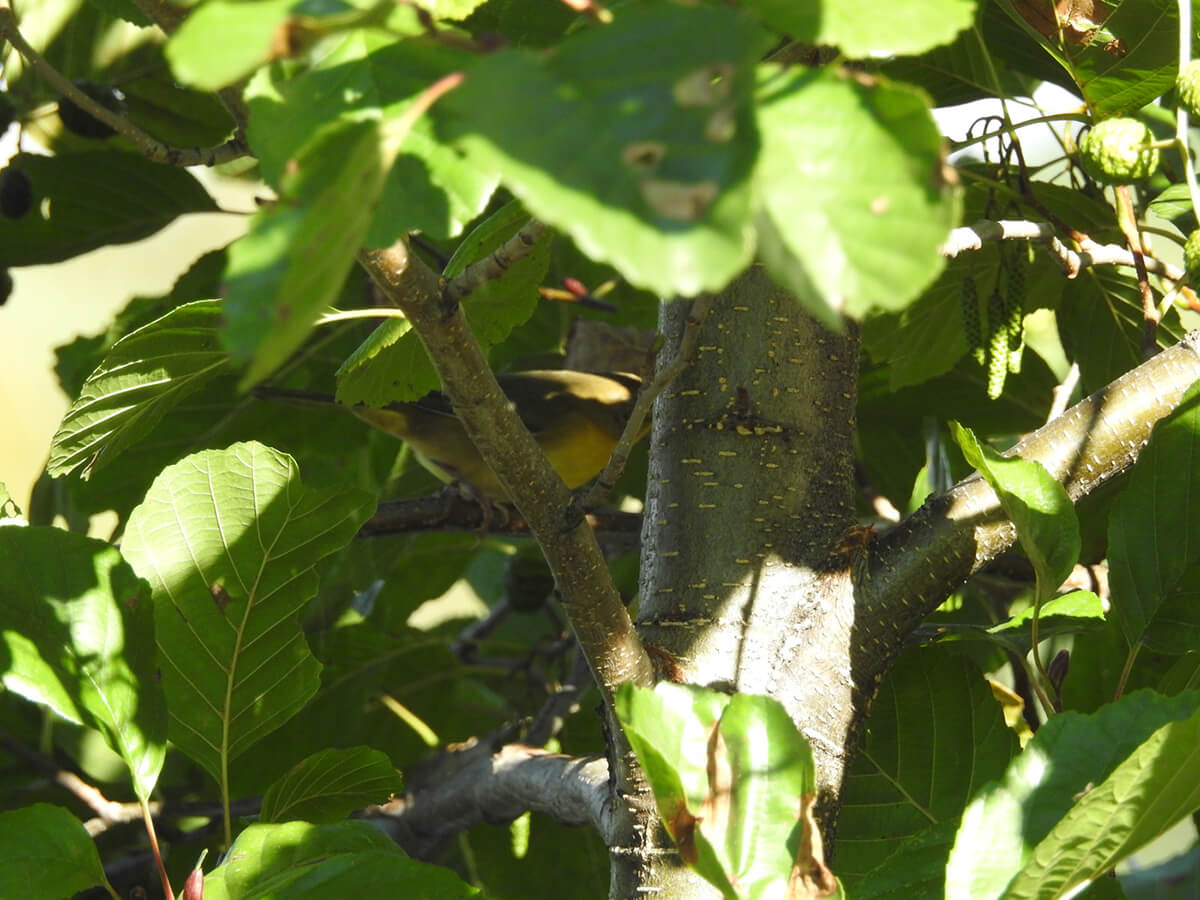Seeing birds isn’t difficult; glance outside and birds are everywhere. Yet, what you may not realize is that the birds you see are just a small percentage of the birds in your midst.
A few years ago, I began paying closer attention to the birds around me and I started seeking out lesser-known birds. As I delved deeper into birding, I discovered how difficult it is to find certain smaller tree-dwelling birds, especially species that prefer to be anonymous.
Bird-watching is a lot like looking for objects in Walter Wick photographs, now on view in Woodson Art Museum galleries and in his I Spy and Can You See What I See children’s books. Using clues accompanying the photographs, you seek to find certain items amid hundreds of objects. Only a keen eye can spot the sought-after object that often is “hidden” in plain sight.
As the spring bird migration ramps up, I’m honing my spotting skills for elusive warblers that will be stopping by central Wisconsin on their way to summer nesting spots farther north. In addition to seeing birds, I rely on listening for bird songs to help locate and identify creatures that mock you with their music while hiding behind a leaf or tree branch, popping out for a split second before taking cover.
As Walter Wick turns finding objects into a game, bird-watching can become easier if you have fun with it. Learn one or two important facts about a new bird – perhaps its preferred habitat and a couple of its songs – and set out to find it. With luck, you will be able to spot the bird and come to know it.
If you’re interested in teaching a child to observe nature, consider beginning with the Walter Wick exhibition for a head start toward seek-and-find skills while strolling through galleries filled with amazing large-scale photographs, on view through May 29.
Oh, what was that? Got to go! Something green and yellow just flew past my window.









